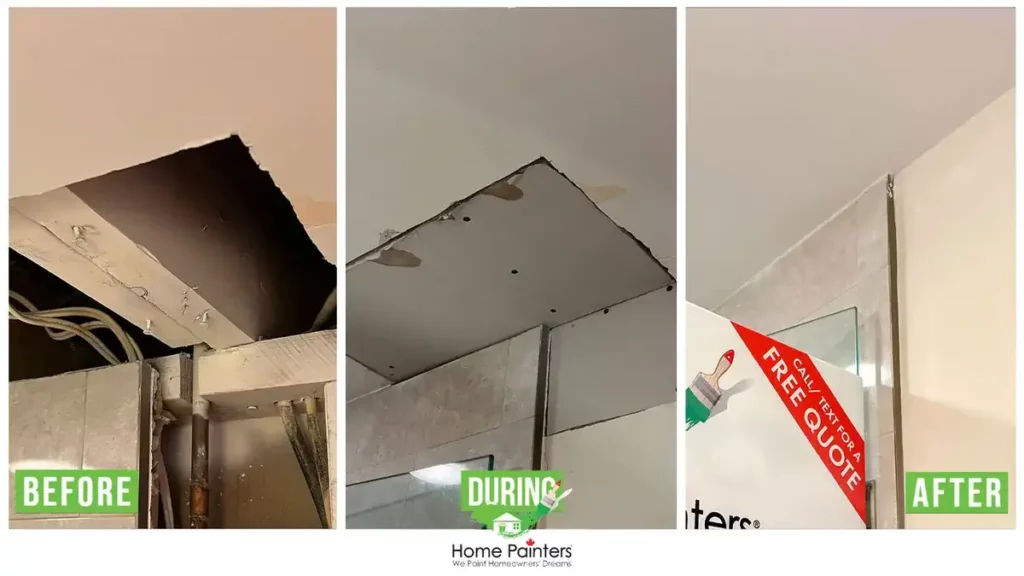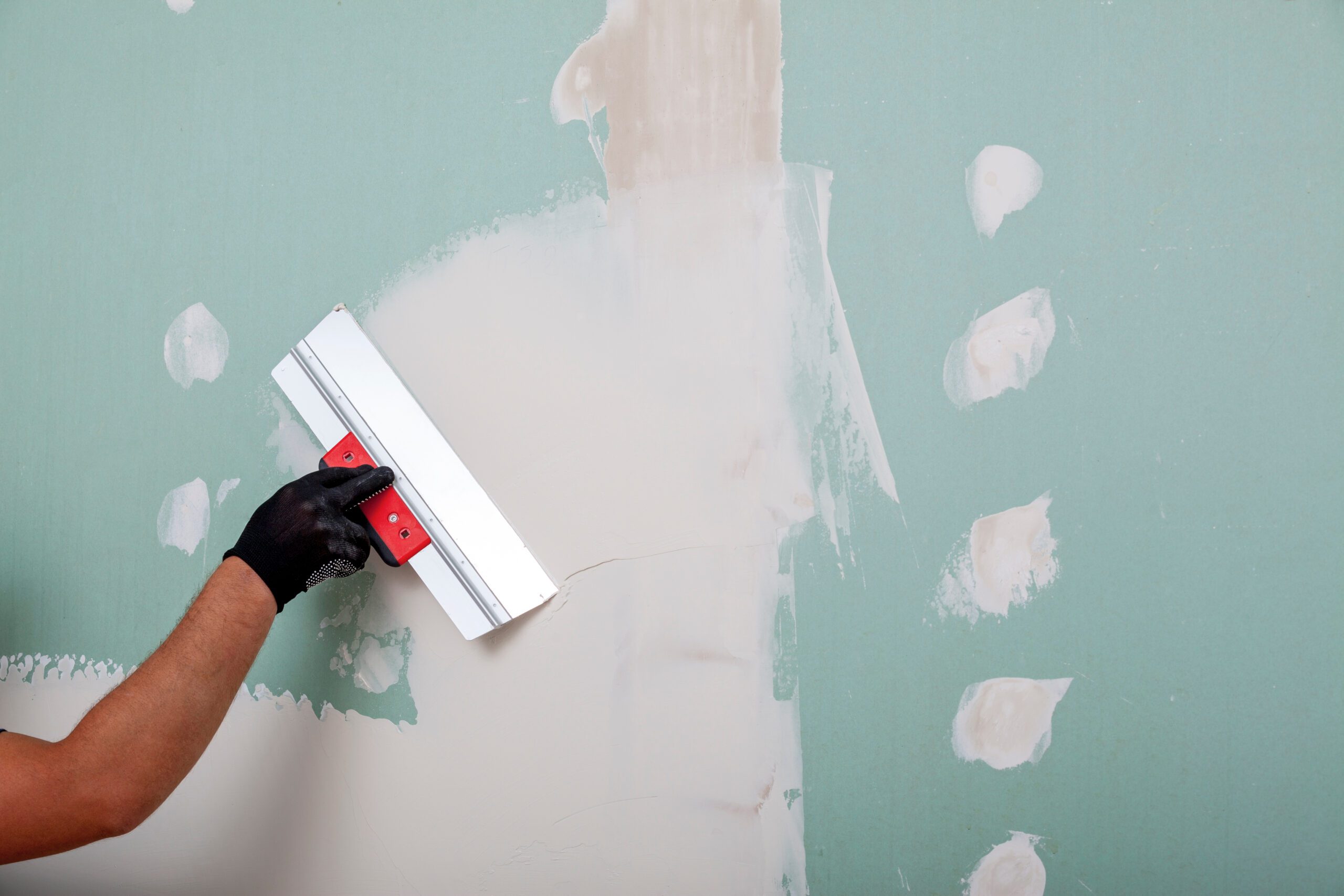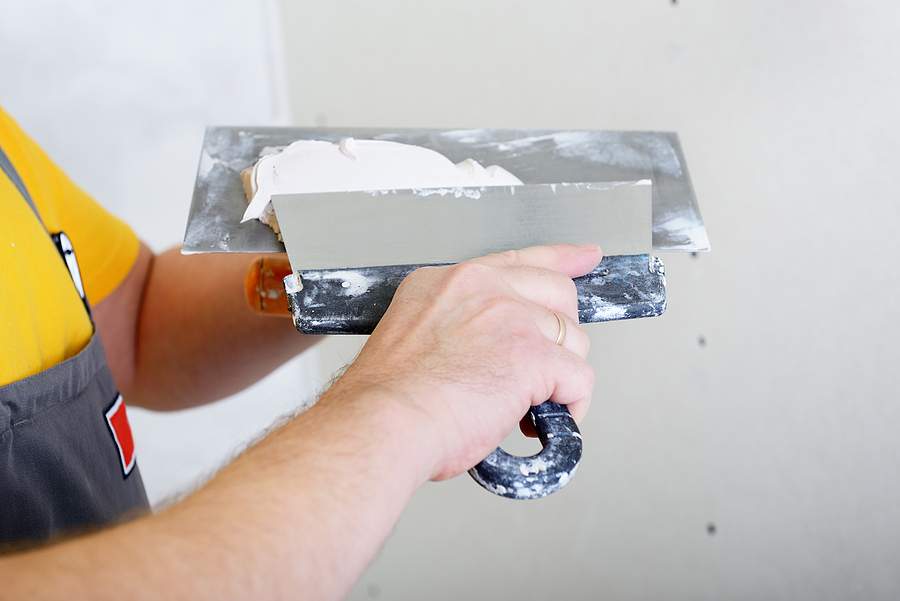A Comprehensive Overview to Learning Drywall Repair Work and Setup
This guide uses an extensive exploration of drywall repair and installation, dealing with both beginners and seasoned specialists. It describes vital tools, strategies for patching and hanging sheets, and the important completing procedures. drywall contractors. By understanding usual mistakes, people can achieve polished outcomes. Understanding these skills not just enhances one's home yet also builds self-confidence in DIY ventures. What fundamental ideas will ensure an effective task from beginning to end?
Vital Devices for Drywall Fixing and Installation
When beginning on drywall repair and installment, a few vital devices can considerably improve the efficiency and top quality of the job. A drywall knife, usually offered in different sizes, is important for using joint compound and smoothing joints. A taping knife is additionally needed for feathering edges and making sure a seamless finish. Additionally, a drywall saw or energy blade enables accurate cutting of drywall sheets to fit any kind of area.

Step-by-Step Guide to Patching Holes
Patching holes in drywall is a simple process that can bring back the wall's look and integrity. To start, the location around the opening must be cleansed and any kind of loosened particles got rid of. For tiny openings, a straightforward spackle or joint compound can be applied with a putty blade. Larger holes may need a spot; an item of drywall can be reduced to fit the opening, safeguarded with sticky or screws, and after that taped around the edges. Once the patch is in area, joint compound is applied over the patch and feathered bent on blend with the bordering wall. After the substance dries out, fining sand is essential to achieve a smooth coating. Ultimately, the fixed location can be keyed and repainted to match the remainder of the wall. This technique guarantees a seamless fixing, boosting the general look of the drywall and keeping its architectural stability.
Techniques for Hanging Drywall Sheets
After efficiently fixing holes in drywall, the following action entails hanging new drywall sheets to develop a smooth surface area. To attain this, one need to start by measuring the wall space accurately and cutting the drywall sheets to fit. It is essential to hang the sheets flat for far better structural integrity, beginning with the top and working downwards.
Utilizing a drywall lift can streamline the procedure, especially for ceiling installments. As soon as placed, safeguarding the sheets with drywall screws at periods of concerning 12 inches along the edges and 16 inches in the area is important. This ensures a strong hold and minimizes the threat of drooping. For corners, the sheets should be reduced to fit comfortably, enabling cleaner joints. Ultimately, it is a good idea to startle the joints in between sheets to reinforce the overall framework, producing a more resilient surface all set for the next stage in the drywall installation procedure.
Finishing Touches: Insulation and Mudding
Completing the drywall installment involves the important actions of mudding and taping, which guarantee a polished and smooth coating. Insulation needs the application of joint tape over the seams in between drywall sheets. Interior Painting. This tape can be either paper or fiberglass mesh, with each type offering distinct benefits. After taping, the following step is mudding, where joint substance, or "mud," is related to cover the tape and load any blemishes
Making use of a drywall knife, the compound must be spread uniformly, making certain a feathered side to decrease noticeable changes. Several layers are typically needed, with sanding in between each layer to achieve a smooth surface area. Careful focus throughout this process is crucial, as it try this substantially influences the last appearance of the wall. With the best method and persistence, completion result will certainly be a remarkable foundation all set for paint or completing touches.
Usual Blunders to Stay Clear Of in Drywall Projects

An additional common error is not enabling enough drying out time between layers, which can trap dampness and endanger the finish. Furthermore, redirected here disregarding to feather the edges properly can produce noticeable lines and flaws. Skipping sanding or making use of inappropriate strategies may leave rough spots. By being conscious of these challenges, individuals can greatly improve the top quality of their drywall projects and attain a professional-looking coating.
Frequently Asked Concerns
Can I Fix Drywall Without Expert Aid?
Yes, one can fix drywall without specialist help. With the right tools, products, and support, individuals can efficiently handle small fixings. Considerable damages might require expert knowledge for suitable outcomes and toughness.
Exactly How Long Does Drywall Compound Require To Dry?
Drywall substance normally takes in between 24 to 2 days to dry totally, relying on elements such as humidity and temperature level. Thinner layers might dry much faster, while thicker applications require more time for ideal results.
What's the Ideal Sort Of Paint for Drywall?
The best kind of paint for drywall is commonly a water-based latex paint. It offers exceptional protection, resilience, and convenience of application, making it excellent for interior wall surfaces while permitting for easy clean-up with soap and water.

Just how Do I Stop Mold on Drywall?
To stop mold and mildew on drywall, guarantee correct ventilation, control humidity levels, use mold-resistant products, and quickly deal with any type of leaks. Routine examinations and instant remediation of water damage are also crucial for lasting prevention.
Is Drywall Recyclable After Elimination?
Drywall is recyclable after elimination, offered it is devoid of pollutants like mold and mildew, paint, or various other unsafe materials. Recycling facilities can refine it into new products, advertising sustainability visit our website and lowering landfill waste in construction.
When starting on drywall repair and installment, a couple of important devices can considerably enhance the efficiency and high quality of the job. After successfully repairing holes in drywall, the next action entails hanging brand-new drywall sheets to produce a smooth surface. Completing the drywall setup entails the vital steps of mudding and taping, which ensure a sleek and smooth surface. Accomplishing a polished coating in drywall jobs can be difficult, and several common errors can threaten the top quality of the job. Yes, one can repair drywall without professional help.